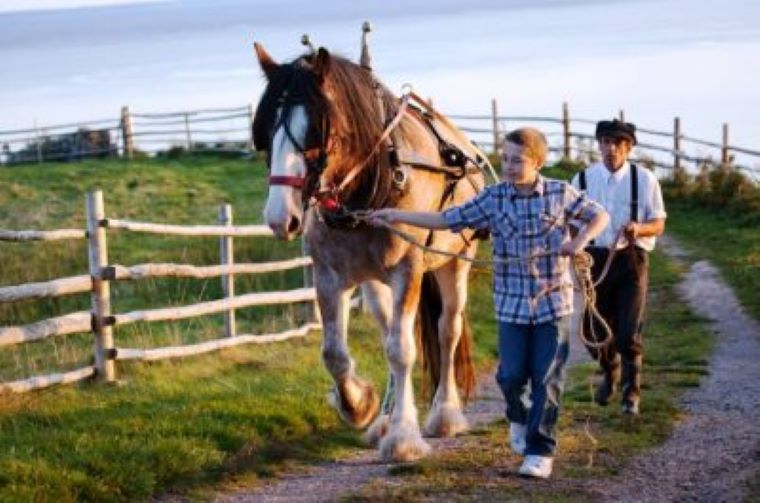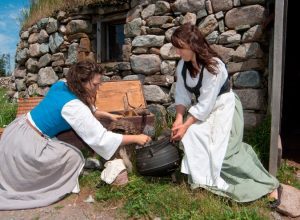
The Nova Scotia Highland Village Society was founded in 1959, to create a living history museum to interpret, preserve and promote the Scottish Gaelic language, culture and heritage as found in Nova Scotia. In 2000, the Society entered into a new relationship with the Province of Nova Scotia, which resulted in the Highland Village becoming a part of the Nova Scotia Museum family. The Society continues to operate the site on behalf of the Province.
The vision of the Highland Village Museum/An Clachan Gàidhealach is to be internationally acknowledged for advancing research, fostering appreciation, learning and sharing Gaelic language and heritage while serving a vibrant Gaelic cultural community (i.e. a Gaelic institution).
The mission of the Highland Village Museum/An Clachan Gàidhealach is to research collect, preserve and share the Gaelic heritage and culture of Nova Scotia. Inclusive of Gaelic folk-life from settlement to present, including but not limited to, language, cultural expressions, lifestyles, crafts, customs, and represent it accurately and vibrantly.
On June 20, 2009, the Nova Scotia Highland Village Society’s Board of Trustees formalized the sites commitment to Gaelic with the adoption of the Village’s first Gaelic Policy. It is the first such policy for any Gaelic related institution or organization in Canada.
 Scottish Legacy
Scottish Legacy
The Gaels of Nova Scotia hold tightly to an ancient legacy through their language, cultural expression, music and dance, and faith. The roots of Gaelic Nova Scotia are found in the Highlands and Islands of Scotland where significant Social and economic changes in the 18th century disrupted the traditional lifestyle of the people. These changes prompted their Gaelic ancestors to look towards Nova Scotia. Between the mid 1700’s and the late 1800’s tens of thousands of Gaelic speaking Scots came to Nova Scotia to begin a new life in a land rich with resources, but full of its own challenges.
They landed on the shores of Nova Scotia to find a home where they could live their lives freely, but where they faced new challenges such as adapting to the significantly different climate. Their Gaelic ancestors adapted to these conditions and began clearing their land to establish new lives and communities.
Settlement patterns show that new communities created by the Gaelic settlers were often based on the same community groups they were familiar with in their homeland. This pattern of chain immigration saw communities and villages spring up all over Nova Scotia which were mostly based on family connections or religious beliefs. Gaels were, and are, a tightly- knit group of people who value community spirit and who were always willing to lend a hand when needed. Community members often worked hand in hand with each other to build their church, school and even held community barn-raisings to help new members of the community.
The language, culture and rural lifestyle of the Gaelic ancestors flourished in Nova Scotia throughout the 1800’s into the early 1900’s when changes such as the attraction of cities, industrial jobs, railroads and an English-only school system began to make it difficult to continue on as they had. Many people held tightly to their roots during these changes, with faith and determination. These proud tradition-bearers have passed on their language, culture, music, song and dance through a thriving tradition of oral history. To this day the legacy of the region’s Gaelic Ancestors remains on the map of the province.
Communities like Iona, New Glasgow, Inverness are all namesakes of towns and villages our ancestors left in Scotland. Gaelic classes, educational programs, traditional music and song, and other events are held throughout the area, and help to continue to embrace the region’s Gaelic history.




















Leave a Comment